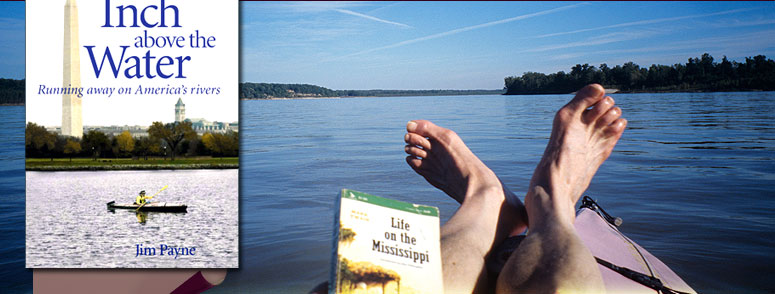Voyage on the Connecticut (page 5)
Several days later, I arrived at the Gilman Dam portage at 8:15 in the morning. There wasn’t a soul about to help me, and I was forced to make a real portage on my own. The ordeal started with breaking down the Klepper and packing it into the carrying pack—a job I hate because, despite having done it scores of times, I still can’t get all the pieces to fit the first time. I staggered with the 60-pound pack along the half-mile trail to the put-in below the dam, taking rest stops and snack breaks along the way. Then I returned for a second trip to bring all the gear: the sleeping bag, the tent, the food bag with its supply of peanut butter, beef jerky, sardines, and Planters Deluxe Mixed Nuts, the supply bag with my gloves, booties, and the battery charger for my digital camera, duct tape and about 20 other vital items. Crouching and squatting, I reconstructed the kayak and re-stowed everything. An entirely self-propelled portage is a five-act, incredibly boring melodrama. It wasn’t until 12:30 that afternoon that I took my final curtain call and lifted the boat carefully over the jagged rock outcrops that guarded the put-in.
I wound my way downriver through two shallow rapids, dinging the bottom on a few more stones, and entered Moore Lake. The largest lake on the Connecticut, extending nine miles long and a little over a mile at the widest, Moore Lake’s perimeter is public land, so there is not a single structure anywhere, no house or cabin to be seen. Traversing it on a Monday afternoon in September, I had this popular scenic lake all to myself. Though it had been heavily used throughout the summer, I found very little litter along the shore where I camped: the principles of polite camping seem well ingrained among users of the Connecticut. The wind died, turning the lake into a shining, shimmering mirror; the sun lowered in the sky behind me, setting aglow the White Mountain range on the far horizon. I set my tent up on a patch of sand, carried the kayak high up the beach and tied the mooring line to a stone in case changing hydroelectric needs radically raised the lake level during the night.
The next morning I was enveloped by a dense morning fog, a quite common experience on the Connecticut in the fall. On clear nights, moisture boils off the warm river water and condenses into a dense blanket that fills the valley, a fog so thick the sun often doesn’t burn it off until 10 or 11 AM. On Moore Lake, it presented an unusual challenge of navigation, since once underway, I couldn’t see 20 feet through it and instantly lost my sense of direction. The GPS saved the day: I set the GO TO function on the dam at the head of the lake and followed its command. (In case you were wondering, no, I didn’t let it guide me over the lip of the dam).
~ ~ ~
Back to First Page • Next Page >

